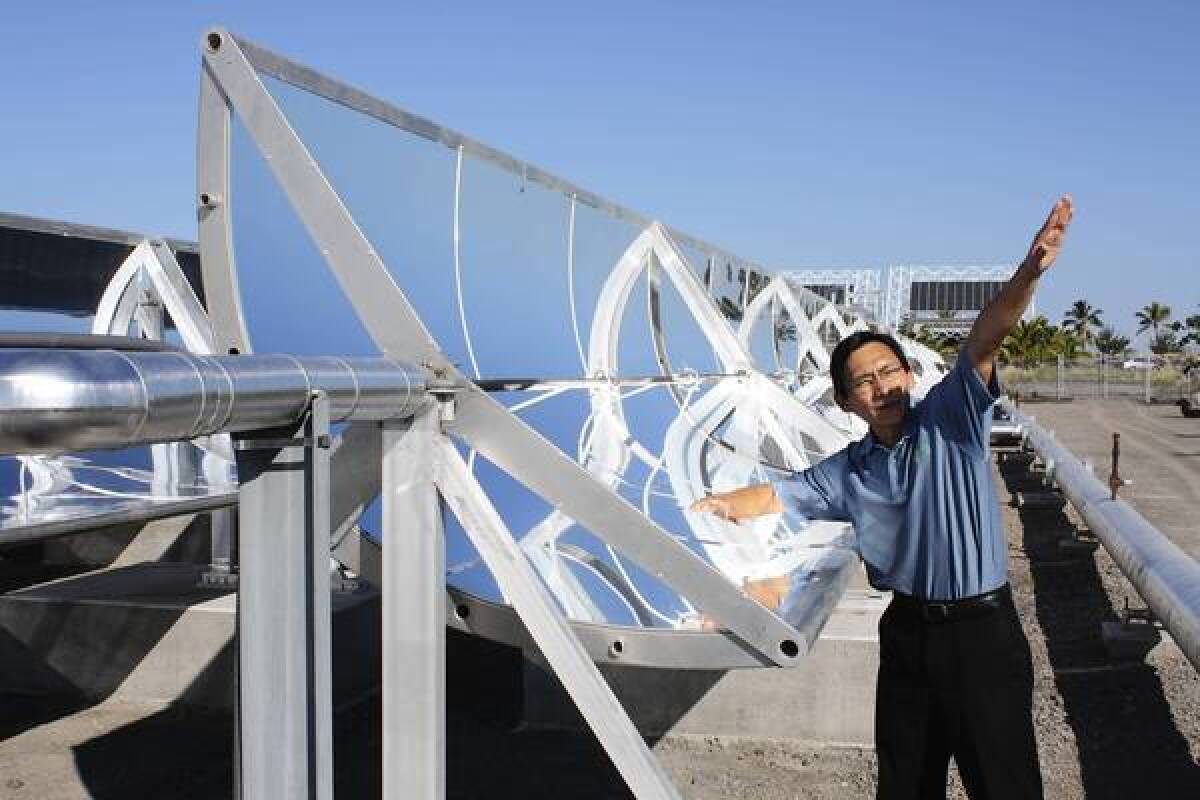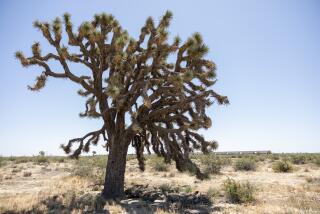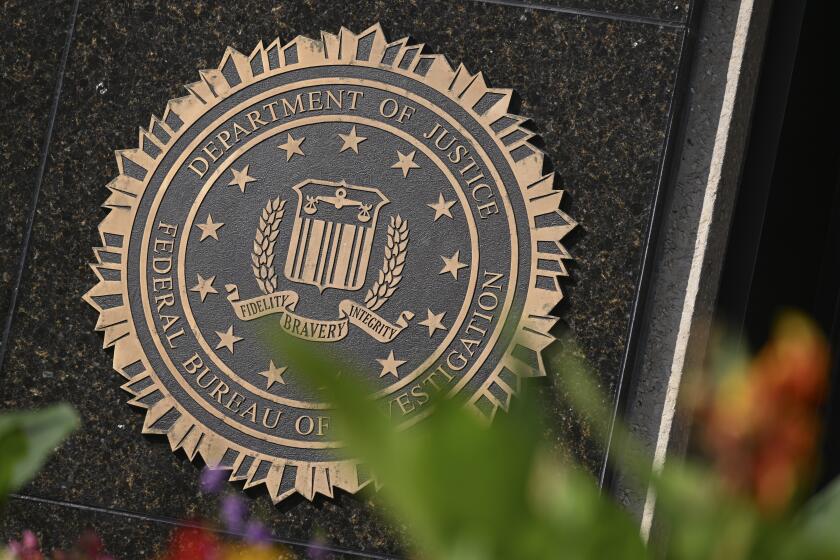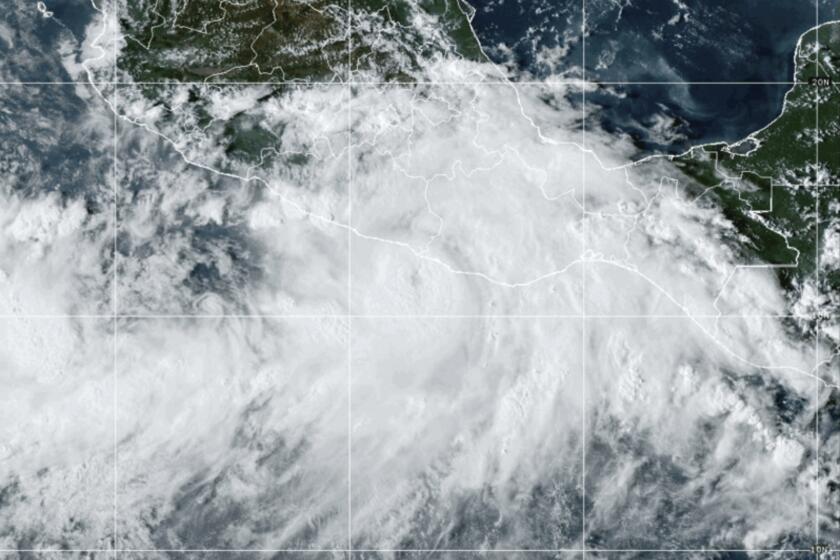Hawaii’s solar power flare-up: Too much of a good thing?

WAILUKU, Hawaii — On an island whose stock in trade is sun, and lots of it, Lawrence and Cindy Lee figured they’d be foolish not to join their neighbors and put a few solar panels on the roof.
The Lees called one of the solar contractors racing around Hawaii these days, and put in their order. Eleven months later, in October — after endless consultations, emails and a $3,000 study required by Maui Electric Co. — they were still waiting for a permit.
“Instead of it being like they want to help you get your solar system in,” Lawrence Lee said, “it’s more like they don’t want you to.”
Solar power has grown increasingly popular across the U.S. Sun Belt, but hardly anywhere has it taken hold as it has in Hawaii. Friendly tax credits, the highest average electricity rates in the nation and the most aggressive renewable energy program adopted by any state have sent homeowners scrambling to install photovoltaic systems on their roofs.
The number of solar power systems across the island state has doubled every year since 2007, with nearly 20,000 units installed. But with homeowners and businesses now producing nearly 140 megawatts of their own power — the equivalent of a medium-size power plant — and solar tax credits biting seriously into the state budget, Hawaii legislators and electrical utilities are tapping the brakes.
Solar tax credits cost the state $173.8 million this year in foregone revenue, up from $34.7 million in 2010, prompting state tax authorities to announce this month that they will temporarily cut the tax credit in half, effective Jan. 1.
Hawaiian Electric Co. on Oahu, which oversees subsidiary utilities on Maui and the Big Island, has warned that the explosion of do-it-yourself solar could threaten parts of the power grid with the possibility of power fluctuations or sporadic blackouts as the power generated by homeowners — unpredictable and subject to sudden swings — exceeded output from power plants in some areas.
So rapid is the growth that Hawaiian Electric at one point proposed a moratorium on solar installations, a plan that met with immediate outrage and was quickly withdrawn. But utilities are requiring expensive “interconnection” studies, such as the one the Lees had to do, in solar-saturated areas to analyze what impact a new unit is going to have on the utility system before it can connect to the grid.
“The last three months are turning into a madhouse of solar here on Oahu,” Hawaiian Electric spokesman Peter Rosegg said. “We’re doing everything we can to get in as much solar as possible, but there’s a strong sense that we’re kind of at a crossroads here in trying to deal with these issues.”
Hawaii has become a solar laboratory for the rest of the country. Many states are experiencing sun-power booms, but few have had their grids overwhelmed to the extent seen in Hawaii.
“No one knows exactly when this is going to take place, but we are approaching a red line…. We will reach a point where they will not accept any more generating capacity,” said Marco Mangelsdorf, who runs a private solar company, ProVision Solar, and teaches energy politics at the University of Hawaii in Hilo.
Historically, power is supplied to homes and businesses from big central power plants, easily controlled by engineers who dial up the turbines when demand peaks, such as on hot afternoons when customers come home and turn on air conditioners. But the push for renewable energy has introduced into the equation “nonfirm” power — electricity generated by wind, which comes and goes, or sun, which can suddenly disappear behind a cloud.
As customers generate more than they need and feed the excess back into the grid for others to use, it makes managing the system much more complex. What happens when a cloud passes over and dozens of rooftop units suddenly grind to a halt? What’s to be done on a sunny autumn day, when rooftop solar systems are producing way more power than the grid can use?
The problem is especially pronounced in Hawaii, where each island has its own isolated power grid and can’t quickly compensate with power generated elsewhere. The result, if not carefully managed, can be computer-killing power surges (in cases of excess generation), flickering lights, isolated blackouts or worse.
“It can crash the entire system,” said Robert Alm, executive vice president of Hawaiian Electric.
California, which has more than 120,000 solar energy systems online, doesn’t have Hawaii’s serious overload problems, but has recently faced its own debate over how much can be paid to solar-equipped homeowners for power they feed into the grid. The Sacramento Municipal Utility District is studying Hawaii’s operations to learn what happens when solar power inundates a power system.
“As an engineer, you always want to look at the worst-case scenario. Well, they have it,” project manager Elaine Sison-Lebrilla said.
Hawaii finds itself pushing the envelope not just because of its abundant sunshine. A bigger driver has been the state’s reliance on oil to fuel its power plants. Oil is always more expensive than natural gas, but prices shot up even higher last year when Japan’s nuclear disaster sent demand, and soon prices, skyrocketing on the Asian markets where Hawaii buys its supplies.
The state has set a goal of obtaining 40% of its power from locally generated renewable sources by 2030. Already, the Big Island has jumped ahead and is producing 44% of its power from renewable sources, and it could hit 100% by the end of the decade.
Kauai announced earlier this month that it would build its third large-scale solar plant and expected to generate half the island’s power by the sun soon. “Our understanding is that would be the highest penetration of any utility, certainly in the United States,” said Jim Kelly, spokesman for Kauai Island Utility Cooperative.
The state is studying a multibillion-dollar undersea cable that would connect outlying islands — the big generators of wind, geothermal and solar power — to Oahu, home to most of Hawaii’s population. This would not only allow them to serve as energy farms for the state, but it would also allow the kind of interconnected grid that would alleviate wind and solar variability problems.
Over the last few months, new rules have liberalized the standards for allowing solar connections, and a week ago, the Lees completed their long journey through the energy bureaucracy: They had their rooftop unit installed. They’re no longer worried about turning off the lights in empty rooms.
“I wish I hadn’t had to go through all this,” Lawrence Lee said. “But it was worth it.”
More to Read
Sign up for Essential California
The most important California stories and recommendations in your inbox every morning.
You may occasionally receive promotional content from the Los Angeles Times.










